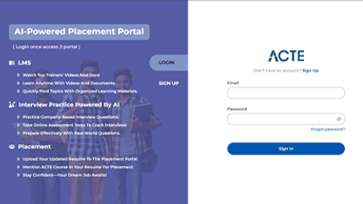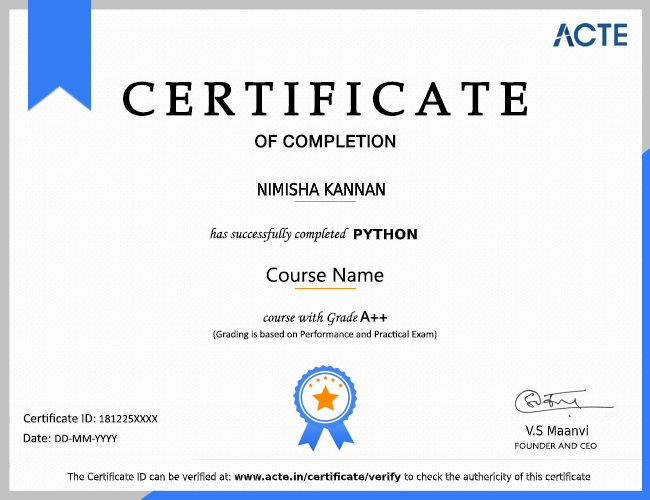Additional Info
It utilizes an interpreter rather than a compiler, making code development easier. It successfully connects many databases and excels at bringing data in from Microsoft Excel, Microsoft Access, MySQL, SQLite, Oracle, and other sources. It's a versatile programming language that connects the worlds of software development with data analysis. It includes a wide range of packages that provide a wide range of codes, functions, and features for data analysis, statistical modeling, visualization, Machine Learning, and data importation and manipulation.It uses R packages to combine a variety of sophisticated tools for communicating reports in multiple formats such as CSV, XML, HTML, and PDF, as well as interactive webpages.
Model : R has a variety of tools for capturing the correct model for your data.
Communicate : Use R Markdown to integrate scripts, graphs, and outputs into a report, or create Shiny apps to share with the world.
Why You Choose R Programming?
Because R is an interpreted language, you can run your code without using a compiler. As a result, we can run code without using a compiler. R understands the code and makes it easy to write it. Many computations are carried out using vectors - because R is a vector language, anybody may add functions to a single vector without having to use a loop.
Learning Easy :
The Tidyverse is a huge set of R packages that greatly lowered the steep learning curve that R programming for Data Science presents. Tidyverse was created by Hadley Wickham and his colleagues with the goal of providing a uniform and structured programming interface that shared their concept of underlying design philosophy, grammar. Tidyverse was created by Hadley Wickham and his colleagues to provide a uniform and structured programming interface that shared their vision of unified underlying design philosophy, language, and data structures.
Data Manipulation :
The entire field of Data Science is concerned with acquiring data, cleaning it, organizing it, and extracting usable information from it using a variety of approaches and algorithms. Getting the data in the proper format so that it can be processed is a key element of this procedure.Data Wrangling is a sub-process that entails collecting relevant data and converting it into a useable format.
Visualization of Data :
Because the R programming language was created, this reason, visual display of data is one of the main takeaways. Data visualization is one of the most important phases in the data analysis process, and R makes it almost simple.R comes with numerous packages that suit the function and even give sophisticated analysis and representation choices, with visualization being the major focus. ggplot2, lattice, high charter, leaflet, dygraphs, sunburstR, and RGL are just a handful of the packages available.
Support for Topic-Specific Packages on a Broad Scale :
R has a large library for areas including Data Science, Machine Learning, Statistics, Econometrics, Finance, Management, and other fields where business analytics are important.When it comes to highly specific issues and use situations, implementing R for Data Science becomes considerably easier with these packages in hand. R is one of the most widely used programming languages for research by scholars and researchers since it focuses on displaying quantitative data using a range of approaches and packages. Statistics students, in particular, are heavily involved in programming language developments, as their growing demands influenced the development of R to meet those needs.
High Availability and Excellent Community Support :
Every programming language has its own community, but what distinguishes the good from the great is how active and supportive the developer community is. Fortunately, R has a very supportive community, where help is only a few keystrokes away and new issues are frequently handled together.This is excellent news for newcomers who have recently entered the realm of R and are eager to learn but are unfamiliar with the community. In case you're wondering, a strong community is critical to the adoption of any programming language.
Roles & Responsibilities
The issue comes as to which sectors are employing R and making it the hot topic that it is. The following are several R programming jobs that can lead to your ‘R' enlightenment :
R Programmer– R programmers' role is to utilize their programming abilities to break down data and build tools that make data analysis easier. They employ data structures like vectors, matrices, and data frames to help them create quickly and efficiently.
Data Scientist– For R programmers, this is one of the most in-demand careers. A data scientist is in charge of developing and executing layouts for huge data sets, as well as data modelling, data mining, research, and prediction.
A data analyst- It should have a combination of technical and analytical skills. A data analyst should be skilled in locating, retrieving, wrangling, and delivering data-driven insights. In addition, a DA should be well-versed in database systems and machine learning.
Data Architect– Data architects are in high demand these days across a wide range of industries. Data architects work with a variety of data sources to combine and maintain them. To be relevant, they must be up to date on the latest technology, such as Spark. A data architect should also be knowledgeable in data warehousing, database architecture, ETL and BI technologies, data modeling, and system development.
Data Visualization Analyst– A data visualization analyst should be able to build and distribute interactive dashboards that provide all of the information needed to make important business decisions. They give a detailed graphical report that assists the company in forecasting and making decisions that will help it develop.
Geostatisticians- These experts are in charge of analyzing spatial and spatiotemporal datasets.
A database administrator- ensures that a database is accessible to all users who require a certain set of information. They make certain that every data is backed up and recovered. They must also be knowledgeable about data modeling, design, and security, as well as the industry in which they work.
Quantitative Analysis with R– Quantitative analysis guarantees that all portfolios are risk-balanced and help us identify new possibilities and assess all asset values using mathematical models in a variety of industries such as banking, telecommunications, and hospitality.
Benefits :
1. R is a free, open-source programming language :
R is released under an open-source license, allowing anybody to download and change the code. The phrase "free as in speech" is frequently used to describe this freedom. R is also accessible for free, which is frequently referred to as "free as in beer." In practice, this means that R is available for free download and usage.
Another advantage, albeit a little more oblique, is that anybody may view, change, and enhance the source code. As a consequence, many talented programmers have contributed to the R code with enhancements and corrections. As a result, R is extremely steady and dependable. It's crucial to note that the GPL has no bearing on how you use R. There are no requirements for using the program; the requirements are only for redistribution. In other words, if you modify or redistribute the R source code, you must make those modifications available to others.
2. R can be used in any situation :
The R Development Core Team has worked hard to make R available on a variety of hardware and software platforms. R is available for Windows, Unix systems (such as Linux), and Mac computers.
3. Extensions are possible in R :
R is capable of a wide range of tasks, including data processing, statistical modelling, and graphics. The extensibility of R, on the other hand, is a huge benefit. Developers may simply develop and publish their own software in the form of add-on packages.Thousands of these packages exist due to the relative simplicity with which they may be created. Many new statistical approaches are accompanied by an R package.
4. R has a thriving community :
Many R users ultimately start assisting new users and promoting R in their jobs and professional communities. They also participate in R mailing groups and question-and-answer websites like Stack Overflow, a programming Q&A site, and CrossValidated, a statistics Q&A site.
5. R has a lot of connections to other languages :
As more individuals switched to R for their studies, they began attempting to integrate R into their existing workflows, resulting in a slew of packages for connecting R to file systems, databases, and other applications. Many of these programs have now been included in the standard R installation. The RODBC package, which reads from databases using the Open Database Connectivity protocol (ODBC), and the ROracle package, which reads Oracle databases, are two examples of add-on packages that link R to database systems. The majority of R's code was written in Fortran and C at first. These two languages' code might simply be invoked from within R. C++, Java, Python, and other popular programming languages were more linked to R as the community developed.
The R Development Core Team created tools to read data from commercial programs, such as SAS Institute's SAS and IBM's SPSS because many statisticians also worked with them.Many of the major commercial packages contain R-related add-ons. SPSS, for example, provides a connection to R for its users, and SAS includes several protocols for moving data and images between the two systems.
Modules :
We may consider utilizing many files first and then sourcing them as a codebase expands. Functions are, of course, highly recommended for novice R users and are a necessary building component. Packages are the next level of abstraction that we have available. With the modules package, I'd want to provide a middle ground: local namespace declarations outside of R packages or within R packages. This functionality is implemented in a variety of ways and languages, including classes, namespaces, functions, packages, and, on occasion, modules. Languages that employ modules as a language construct include Python, Julia, F#, Scala, and Erlang (among others). Some of them are running concurrently with classes and packages.
Modules provide you the ability to build a new context and reuse names, among other things. To be clear, modules are not intended to be a replacement for packages. Instead, we could utilize them to construct local namespaces both within and outside of a package. Modules are somewhere between functions and packages on the abstraction scale: they can include functions and data. Functions, data, and modules can all be found in packages (furthermore documentation, tests, and are a solid way to share code).In certain types of scenarios, we overlook the importance of organizing the codebase. It's uncontrollable development that occurs when we're not paying attention. It occurs more frequently than we would like to acknowledge, and it is also preventable. Modules provide: Aside from all the excellent practices you may and should use, modules provide :
- In one R session, a safe(r) method to source files
- To avoid package name conflicts, follow these steps: (a) by importing individual functions, and (b) by importing them just locally.
- Avoid naming conflicts between distinct portions of your codebase (perhaps files). You rely on objects in your global workspace in many instances. You may make them local by using modules.
- Provide user interfaces while keeping the implementation hidden.
- How and where to Install the Package on Your Computer
- Using your favorite method, launch R. (icon on the desktop, Start Menu, dock, etc.)
- In the top menu, select "Packages," then "Install package(s)."
- Select the mirror that is nearest to your current location.
- Now it's up to you to decide which packages to install.
Pay Scale :
A qualified R professional with less than one year of experience or new to the job market makes an average of Rs 392K per year, including bonuses, overtime, and tips. A data analyst with R skills and 1-4 years of industry experience may expect to earn about Rs 500K per year. While yearly wages for R Programmers range from 540K (25th percentile) to 114K (75th percentile) on Recruiter, the bulk of R Programmer salaries presently range from 54Lakhs (25th percentile) to 131K (90th percentile) in the United States.































